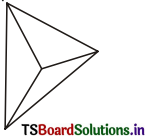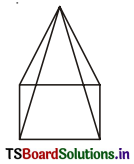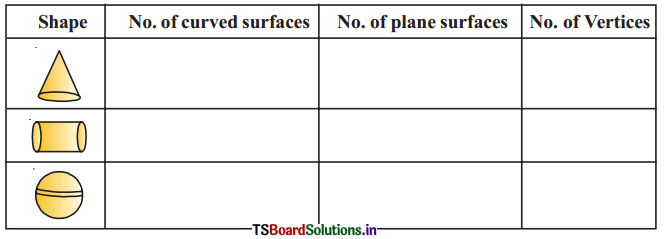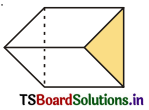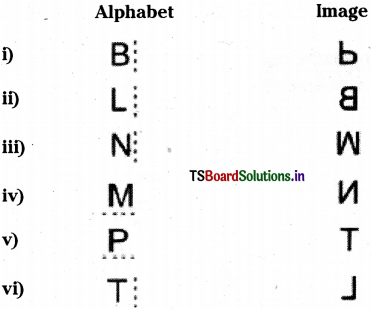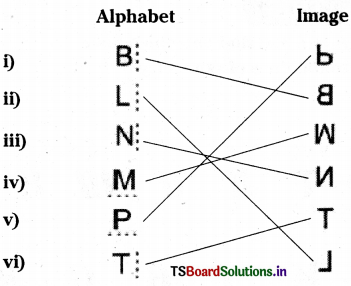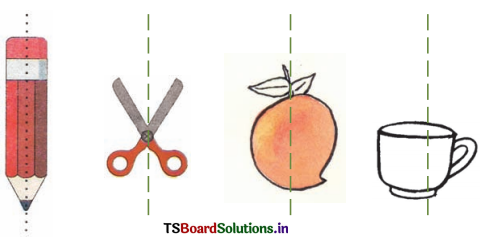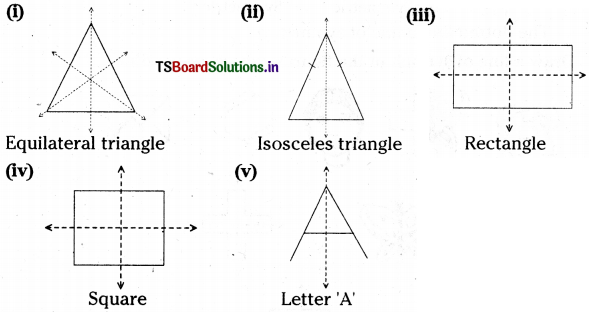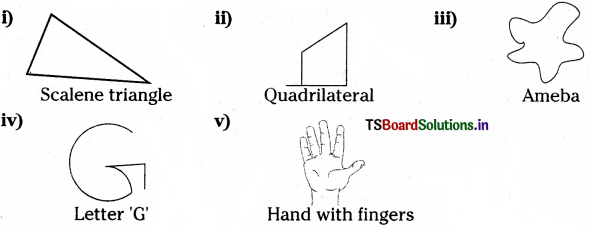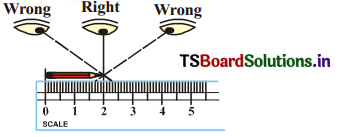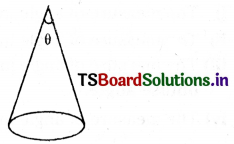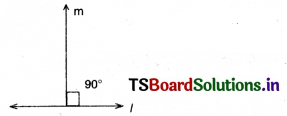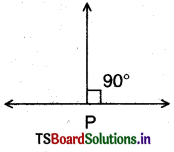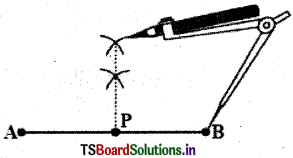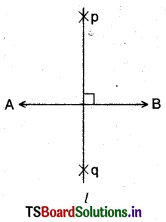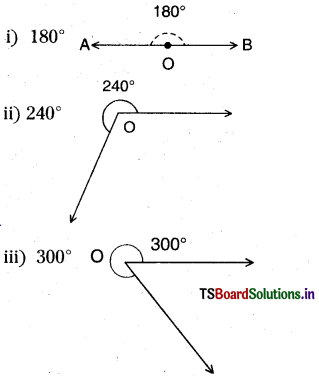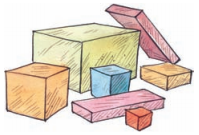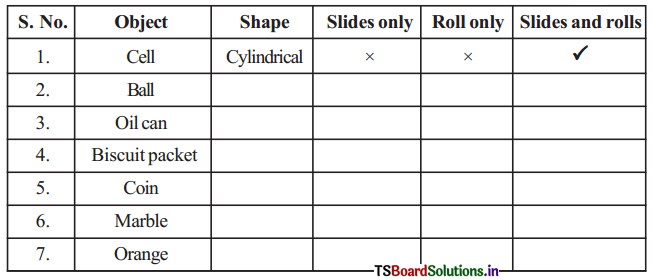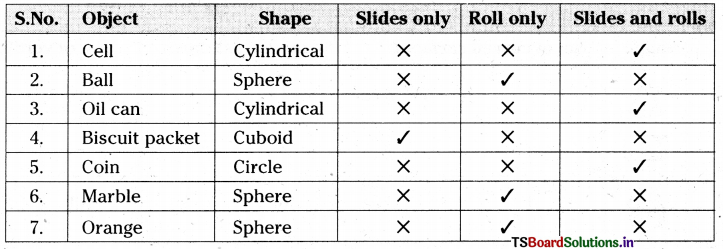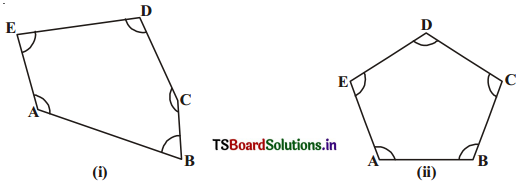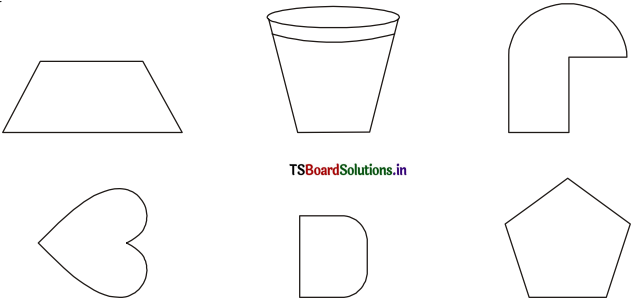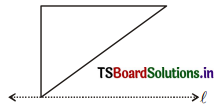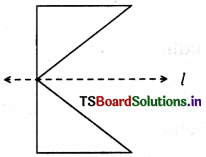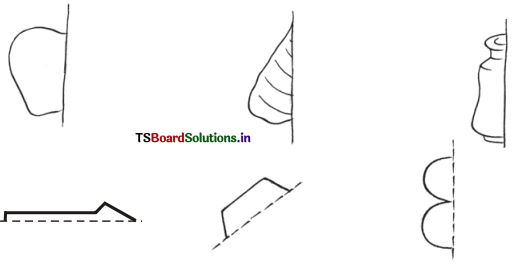Students can practice TS SCERT Class 6 Maths Solutions Chapter 9 Introduction to Algebra Ex 9.3 to get the best methods of solving problems.
TS 6th Class Maths Solutions Chapter 9 Introduction to Algebra Exercise 9.3
Question 1.
State which of the following are equations.
(i) x – 3 = 7
(ii) l + 5 > 9
(iii) p – 4 < 10
(iv) 5 + m = – 6
(v) 2s – 2 = 12
(vi) 3x + 5 > 13
(vii) 3x < 15
(viii) 2x – 5 = 3
(ix) 7y + 1 < 22
(x) – 3z + 6 = 12
(xi) 2x – 3y = 3
(xii) z = 4
Answer:
The following are the equations.
(i) x- 3 = 7
(iv) 5 + m = – 6
(v) 2s – 2 = 12
(viii) 2x – 5 = 3
(x) – 3z + 6 = 12
(xi) 2x – 3y = 3
(xii) z = 4
![]()
Question 2.
Write LHS and RHS of the following equations.
(i) x – 5 = 6
(ii) 4y = 12
(iii) 2z + 3 = 7
(iv) 3p = 24
(v) 4 = x – 2
(vi) 2a – 3 = – 5
Answer:
The value of expression to the left of the sign ‘=’ is called Left Hand Side (LHS) and that of expression to the right of the sign ‘=’ is called Right Hand Side
(RHS)
(i) x – 5 (LHS) 6(RHS)
(ii) 4y (LHS) 12 (RHS)
(iii) 2z + 3 (LHS) 7 (RHS)
(iv) 3p (LHS) 24 (RHS)
(v) 4 (LHS) x – 2 (RHS)
(vi) 2a – 3 (LHS) -5 (RHS)
Question 3.
Solve the following equations by Trial & Error method.
(i) x + 3 = 5
Answer:
| Value of x | Value of LHS | Value of RHS | Whether LHS and RHS are equal |
| 1 | 1 + 3 = 4 | 5 | Not equal |
| 2 | 2 + 3 = 5 | 5 | Equal |
We find that for x = 2, both LHS and RHS are equal. Therefore x = 2 is the solution of the equation.
(ii) y – 2 = 7
Answer:
| Value of y | Value of LHS | Value of RHS | Whether LHS and RHS are equal |
| 1 | 1 – 2 = – 1 | 7 | Not equal |
| 2 | 2 – 2 = 0 | 7 | Not equal |
| 3 | 3 – 2 = 1 | 7 | Not equal |
| 4 | 4 – 2 = 2 | 7 | Not equal |
| 5 | 5 – 2 = 3 | 7 | Not equal |
| 6 | 6 – 2 = 4 | 7 | Not equal |
| 7 | 7 – 2 = 5 | 7 | Not equal |
| 8 | 8 – 2 = 6 | 7 | Not equal |
| 9 | 9 – 2 = 7 | 7 | Equal |
We find that for y = 9, both LHS and RHS are equal. Therefore y = 9 is the solution of the equation.
(iii) a – 2 = 6
Answer:
| Value of a | Value of LHS | Value of RHS | Whether LHS and RHS are equal |
| 1 | 1 – 2 = – 1 | 6 | Not equal |
| 2 | 2 – 2 = 0 | 6 | Not equal |
| 3 | 3 – 2 = 1 | 6 | Not equal |
| 4 | 4 – 2 = 2 | 6 | Not equal |
| 5 | 5 – 2 = 3 | 6 | Not equal |
| 6 | 6 – 2 = 4 | 6 | Not equal |
| 7 | 7 – 2 = 5 | 6 | Not equal |
| 8 | 8 – 2 = 6 | 6 | Equal |
We find that for a = 8, both LHS and RHS are equal. Therefore a = 8 is the solution of the equation.
![]()
(iv) 5y = 15
Answer:
| Value of y | Value of LHS | Value of RHS | Whether LHS and RHS are equal |
| 1 | 5 × 1 = 5 | 15 | Not equal |
| 2 | 5 × 2 = 10 | 15 | Not equal |
| 3 | 5 × 3 = 15 | 15 | Equal |
We find that for y = 3, both LHS and RHS are equal. Therefore y = 3 is the solution of the equation.
(v) 6n = 30
Answer:
| Value of n | Value of LHS | Value of RHS | Whether LHS and RHS are equal |
| 1 | 6 × 1 = 6 | 30 | Not equal |
| 2 | 6 × 2 = 12 | 30 | Not equal |
| 3 | 6 × 3 = 18 | 30 | Not equal |
| 4 | 6 × 4 = 24 | 30 | Not equal |
| 5 | 6 × 5 = 30 | 30 | Equal |
We find that for n = 5, both LHS and RHS are equal. Therefore n = 5 is the solution of the equation.
![]()
(vi) 3z = 27
Answer:
| Value of z | Value of LHS | Value of RHS | Whether LHS and RHS are equal |
| 1 | 3 × 1 = 3 | 27 | Not equal |
| 2 | 3 × 2 = 6 | 27 | Not equal |
| 3 | 3 × 3 = 9 | 27 | Not equal |
| 4 | 3 × 4 = 12 | 27 | Not equal |
| 5 | 3 × 5 = 15 | 27 | Not equal |
| 6 | 3 × 6 = 18 | 27 | Not equal |
| 7 | 3 × 7 = 27 | 27 | Not equal |
| 8 | 3 × 8 = 24 | 27 | Not equal |
| 9 | 3 × 9 = 27 | 27 | Equal |
We find that for z = 9, both LHS and RHS are equal. Therefore z = 9 is the solution of the equation.



